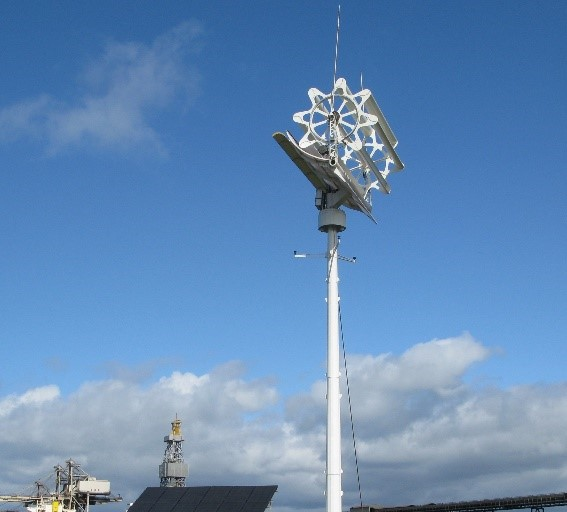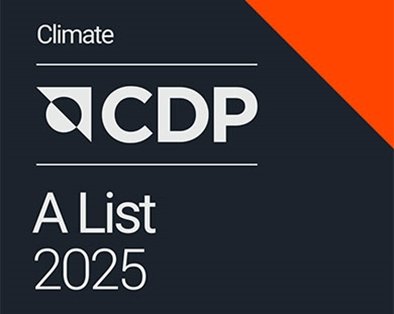For rural economies, we know that connectivity is critical for new job creation, flexible working, improving the productivity of agriculture and enhancing local public services. But providing rural and remote areas with connectivity can be complex and challenging. We’re working with innovators across our markets to find new, sustainable solutions.
How do mobile networks work? A simple explanation
Mobile phone networks are made-up of a large number of geographic areas called ‘cells’. These cells are arranged to provide large areas of mobile coverage. Mobile base stations in each cell communicate with mobile phones via radio waves. This enables their users to connect to the internet and make calls. Each base station has a limited range, which is why multiple base stations are needed to cover a large geographical area.
Why is it hard to power mobile base stations in rural or remote areas?
Mobile networks cannot work without base stations, and base stations cannot work without electricity. Vodafone’s European network uses 100% of grid-supplied electricity from renewable sources, and we’re working to achieve the same in Africa by 2025. The commitment to eliminate all greenhouse gas emissions from our network creates challenges, however, when trying to connect base stations in areas that are not supplied by an electrical grid.
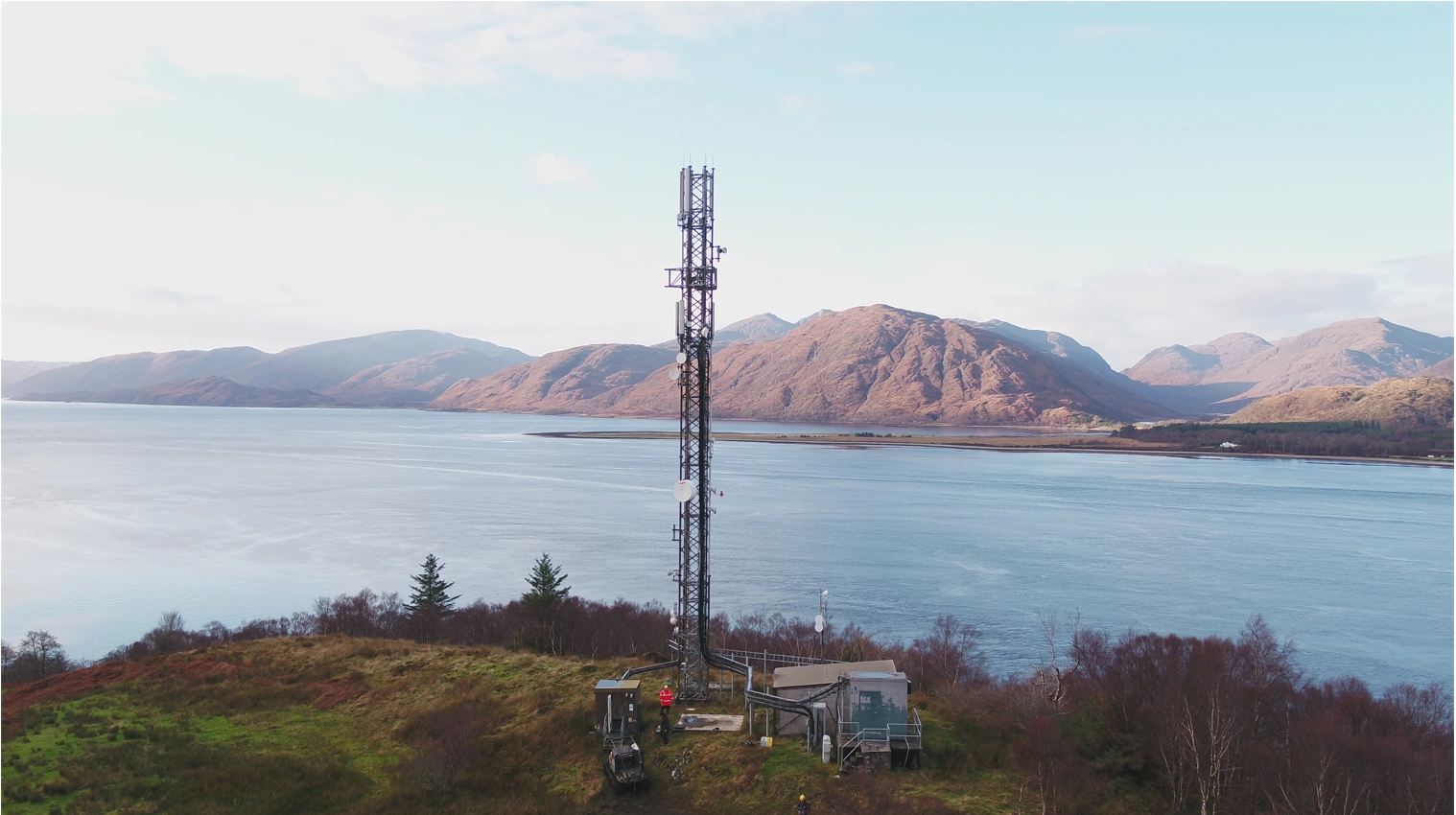
Traditional diesel generators offer a solution, but they are not sustainable and do not fit within Vodafone’s carbon reduction commitments.
Solar panels can be used in conjunction with generators to help reduce emissions – Vodafone has installed solar battery systems on more than 1,200 base stations so far – but in most cases they cannot provide 100% of a base station’s power on their own. There simply isn’t enough space on base station sites to install the number of solar panels needed. Solar panels also only generate power in the daytime, and shading from trees and buildings can limit the number of sites where solar power is feasible.
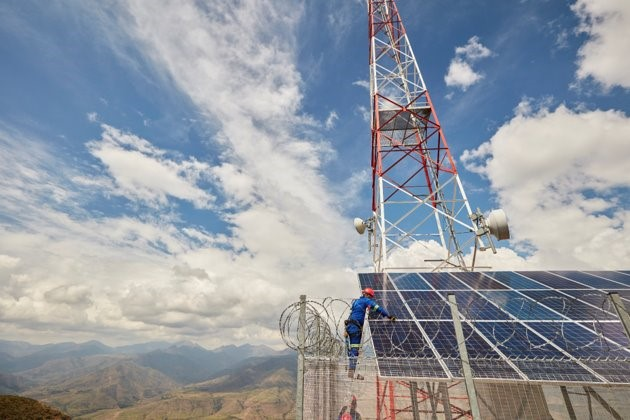
We are trialling other solutions for powering remote base stations with renewable energy, such as using wind turbines or fuel cells, but there are a number of challenges when trying to roll these out at scale. Both solutions require specialised service teams, for example, which can be difficult to deploy in remote areas, while sustainable fuel (e.g. hydrogen) is not always readily available.
The risk of vandalism and theft can also limit our ability to use expensive equipment in certain areas.
What if base stations could power themselves?
Vodafone has been collaborating with a variety of organisations to develop innovative sustainable power solutions that can be deployed at scale.
In the UK, for example, we have been working with Crossflow Energy to develop self-powered mobile masts. These masts combine Crossflow Energy’s horizontal, ‘bird-friendly’ wind turbine technology with the latest in solar and battery power solutions.

We are now working with our network partner, Cornerstone, to run a proof of concept which will see the technology installed on rural mobile sites in the UK. The technology could enable us to build new masts in some of the UK’s most remote areas in future, without needing access to the electricity grid.
In Germany, Vantage Towers is working with Berlin-based wind energy start-up MOWEA to install more than 750 micro turbines on 52 base stations across the country. Energy generated by the micro turbines could, under ideal wind conditions, cover 100% of the requirements for each site, but generally reduces power consumption from the grid and electrical running costs by around two-thirds.
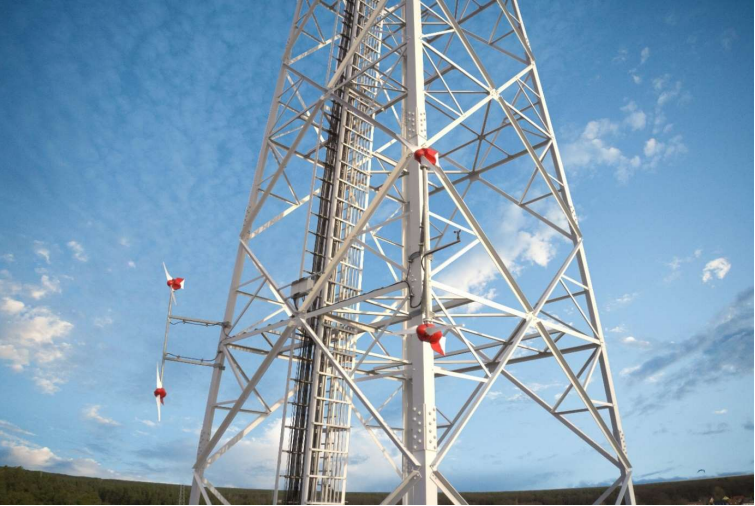
The unique design of MOWEA’s micro turbines makes it possible to install them in places where conventional wind turbines are not an option and, unlike solar panels, they can generate power overnight.
Our aim is to continue working with innovators to develop and scale solutions that are reliable, cost-effective and align with our commitments to reach ‘net zero’ across our global carbon footprint by 2040.






















